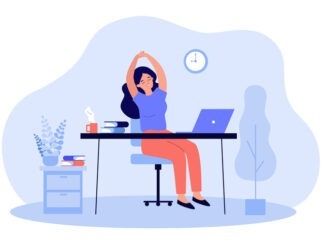In our fast-paced world, the idea of taking a significant break might seem impossible, but taking time to do nothing can be surprisingly rejuvenating. In this article, Anita Chaudhuri writes about her experience of doing nothing
CREDIT: This is an edited version of an article that originally appeared on The Guardian
Recently, I went on a relaxing holiday to Málaga. I admired the Pompidou Centre, stared out to sea, and guzzled bitter-orange-filled dark chocolate from the supermarket. Bliss. Yet, days after returning recharged, I found myself craving more time off and experiencing a low-level discontentment that only intensified.
Understanding rest
Was I having an existential breakdown? I turned to psychologist Suzy Reading, author of Rest to Reset: The Busy Person’s Guide to Pausing With Purpose, for advice. She suggested that many people struggle to identify what kind of rest they need. “For people who do a lot of socialising and interacting with others for their work, they might find that what they actually need to replenish is silence and solitude.”
This struck a chord with me, an extrovert sceptical that solitude could be rejuvenating. “If you are struggling to recharge, a good place to start is by thinking about how you normally use your mind and body. Ask yourself, what kind of environments are you in daily?” says Reading. She cites the example of a teacher who spends all day guiding others. For them, a break might involve allowing someone else to make decisions, even if it’s just where to go for dinner.
Rest beyond sitting quietly
“Many people confuse rest with sitting down quietly. But for those who spend their working lives sitting and staring at screens, a better form of rest might involve listening to music or doing some form of movement. For some, rest might involve embarking on a creative project to express themselves in a new way.”
Taking a year out isn’t financially viable for most of us. But the good news is, it’s not necessary. “The key is to allocate some time out from the hurly-burly of life to reclaim some headspace,” says Reading. “If we step away from our routines, it gives us a chance to realise what we can’t wait to get back to. It can help us appreciate what we actually enjoy.”
Practical steps for rest
My work ethic is too strong to take more than a day or two off. “Even though my book is called A Year of Nothing, you can just do a weekend of nothing,” suggests Gannon, though she warns that doing so may provoke pushback. “People often ask what I’m up to at the weekend, and I regularly say: ‘Nothing’. The response is often: ‘Surely you have some plans’, and I reply: ‘Nope, none.’”
Taking time out can prompt a surge in productivity. Tamu Thomas, author of Women Who Work Too Much, believes we don’t value rest enough. “We need to understand that it fuels everything else in our lives. There’s an American sports coaching maxim that states: ‘The rest is just as important as the race.’ It’s true.”
Thomas, a former senior social worker, realised the importance of rest after a severe panic attack. She discovered the work of Saundra Dalton-Smith, whose TED Talk explains that we need seven types of rest: physical, mental, emotional, sensory, creative, social, and spiritual. Thomas notes that emotional rest is often most overlooked, especially by those who believe their value comes from caretaking in every sphere of their lives.
Making time for a reset
For many, logistical challenges make regular breaks tough. Shirley-Ann O’Neill, an art adviser, schedules a reset week every seven weeks. “I leave my diary open for spontaneous moments of rest and rejuvenation. I enjoy leisurely mornings, peaceful walks, creative pursuits, and impromptu outings. As a busy mum of three, this really helps me rest.”
Sometimes, a traumatic event prompts a reset. Health mentor Sophia Husbands, after losing her mother and a close friend, made 2023 a reset year. She scaled back work to re-evaluate her life, reviewing core values and conducting a relationship audit, culling those not serving her best interests.
Embracing aimlessness
I tried my own reset one Sunday. Without a plan, I loll around doomscrolling. I take Gannon’s advice: “Look at your diary and ask yourself, what can you get out of doing?” Cancelling plans was hard, but I justified it as research. “Sorry, I can’t make it, I’ve got to work,” I told family and friends.
I went for an aimless walk, repotted a plant, and went to bed early, feeling it was a massive waste of time. But the next morning was different. I slept soundly and woke up with a solution to a lingering problem. Doing nothing had been surprisingly productive.
In a world that never seems to slow down, taking time to pause and recharge can be the ultimate game-changer. So, next time you feel overwhelmed, don’t be afraid to hit the pause button and embrace the beauty of doing nothing.



Be the first to comment